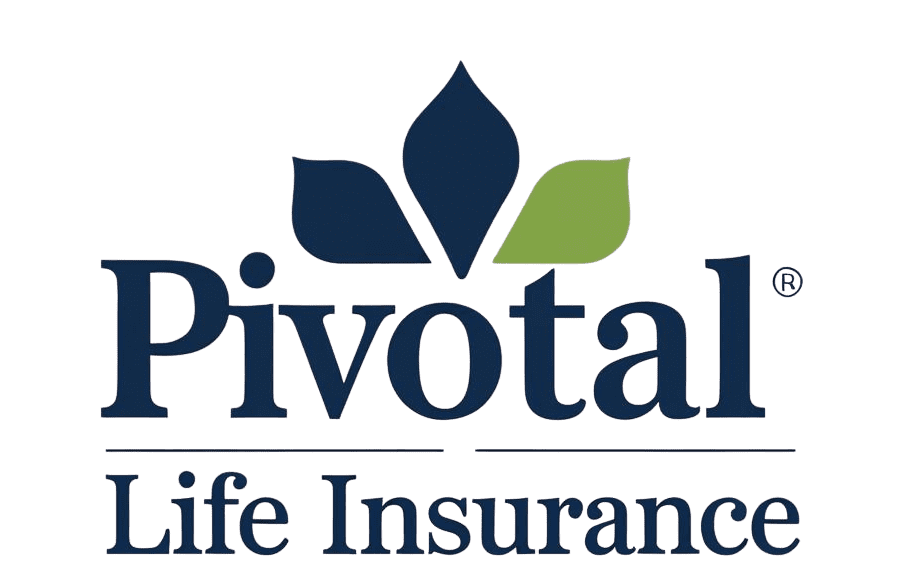Term life insurance is a flexible, cost-effective way to protect loved ones when you’re planning for the future. It provides a safety net if the unexpected happens, offering a tax-free death benefit for a set period.
This guide covers everything from term life insurance and other policy types to riders, costs, digital trends, and common misconceptions.
You’ll learn how different term products (for families, seniors, veterans, etc.) work and how to tailor coverage with riders and digital tools.
By the end, you’ll understand how term life insurance can provide peace of mind for you and your family.
Understanding Term Life Insurance Basics
- Coverage Period: Term life insurance covers you for a specified period (usually 10–30 years). If you die during that term, the policy pays a lump-sum death benefit to your beneficiaries. Typical terms range from 10 to 30 years (some insurers offer up to 40 years).
- Level Premiums: Most term policies have level premiums, meaning your payment stays the same throughout the term. This contrasts with “decreasing term” (next section) or other plans.
- Death Benefit: The death benefit is a tax-free payout to beneficiaries. It can cover income replacement, mortgage payoff, debt, or other family needs.
- No Cash Value: Term policies do not build cash value like whole life does. All premiums go toward insurance protection, which is why term is generally more affordable.
- Renewal & Conversion: Most term policies can be renewed or converted to permanent insurance without a new medical exam. However, be aware that renewal premiums are much higher. Investopedia notes that if you renew an expired term policy, you could face a “sharp increase” in cost. Convertible term policies let you switch to a permanent policy without underwriting.
- Eligibility: Standard term policies require underwriting (age, health review). If you have serious health issues or are older, you may only qualify for no-exam or guaranteed-issue plans, which tend to be more expensive.
Core Term Life Insurance Policies
Level Term Life Insurance
Level term life insurance keeps your death benefit and premiums constant throughout the policy term. For example, a 20-year level term policy will pay the same amount whether the insured dies in year 1 or year 20.
This simplicity makes budgeting easy. Most buyers choose level term policies because they match steady financial obligations (like rent or college costs) without any surprises.
Decreasing Term Life Insurance
With decreasing term life insurance, the death benefit declines over time on a predetermined schedule. These policies were popular for covering a mortgage: as you pay down your home loan, the death benefit reduces in line with the remaining balance.
Because the insurer’s risk falls (less benefit to pay later), premiums are typically lower than for a level term policy with the same initial coverage. If you die early in the term, your beneficiaries get a larger payout than if you die near the end.
Convertible Term Life Insurance
A convertible term policy lets you switch to a permanent policy (like whole life) without a new medical exam. This is useful if your future needs change or if you develop health issues later on.
For instance, you might start with a 15-year term to cover young children, then later convert to whole life to ensure lifelong coverage. The premium will adjust to the permanent policy’s rates at conversion time, but you keep the same coverage amount and avoid fresh underwriting.
Renewable Term Life Insurance
Renewable term policies allow you to extend the coverage at the end of the term without proving insurability again. For example, a 5-year renewable term has fixed premiums for five years; at renewal, you can continue coverage (often up to a certain age limit) with a new premium based on your current age.
This is handy if your health has declined, but beware that each renewal’s rate can rise steeply as you age.
Joint Term Life Insurance
Joint life insurance covers two people on one policy (often spouses). It can pay a benefit after the first person dies (so the remaining spouse is protected) or after both have passed (survivorship).
However, joint policies are most often permanent in form; joint term plans are rare. If two partners want term coverage, they usually buy separate individual term policies instead.
Term Life Insurance With Living Benefits
Term policies can include living benefit riders that let the insured access part of the death benefit while still alive under certain conditions.
For example, an accelerated death benefit (or terminal illness rider) allows early payout if you’re diagnosed with a terminal illness.
This money can help cover medical or living expenses during illness. An accidental death benefit rider pays an additional lump sum if the insured dies from an accident. Other riders, like chronic illness riders or disability riders, can accelerate benefits if serious health issues occur.
Term Life Insurance Without Medical Exam
If you need quick coverage or have health concerns, no-exam term life is available. Insurers offer simplified-issue and guaranteed-issue term policies where you skip the physical exam.
Simplified policies require a health questionnaire (higher premium than standard term), while guaranteed policies ask no health questions (very high premium, limited benefit). These options provide eligibility for many applicants, but as Progressive notes, they “can cost significantly more” and often cap coverage.
Specialized Audiences & Needs
Term Life Insurance for Seniors

Seniors often have tighter budgets and age-related limits on term policies. Carriers usually stop selling 30-year terms around age 60, and premiums climb sharply with age.
As one source notes, older applicants “have fewer options” and pay higher rates. Still, a healthy senior with remaining debts (like a late-life mortgage) may buy a shorter-term policy to cover those obligations.
Progressive suggests that if a senior is in good health and needs to pay off debts or final expenses, a shorter-term policy can be an affordable solution. (Keep in mind, however, that the term ends – if you outlive the policy, no payout occurs.)
Term Life Insurance for Veterans

Many veterans start with VA group life insurance (SGLI/VGLI), which is essentially renewable term coverage. New York Life explains that “most VA-sponsored life insurance is term life”.
That means premiums will eventually become very expensive as you age. Recognizing this, the VA recently reduced premiums: for example, VGLI rates were cut by 2–17% (depending on age) starting in mid-2025.
Veterans may supplement VA coverage with private term insurance for additional protection. It’s wise for vets and their families to compare both VA and private term quotes, keeping in mind special discounts or programs available for veterans.
Term Life Insurance for Families

Families with young children or dependents often rely on term life insurance for financial security. It provides an affordable income replacement during child-rearing years.
As one advisor notes, life insurance lets you “take care of those you care about” by ensuring bills (mortgage, education, daily expenses) can still be paid.
For example, a 20-year term can be timed to cover school years, while its death benefit can eliminate a mortgage if tragedy strikes. This peace of mind – knowing your family’s well-being is protected – is one of the main reasons parents consider term coverage.
Term Life Insurance Riders and Customizations
Term policies can be customized with various riders to enhance protection:
- Return of Premium (ROP) Rider: If you outlive the term, an ROP rider refunds the premiums you paid into the policy. It effectively makes the policy cost-neutral if no death benefit is paid. (Without this rider, term premiums are not returned if you cancel or expire.)
- Accelerated Death Benefit Rider: This rider allows early access to a portion of the death benefit if you are diagnosed with a terminal or critical illness. For example, NY Life’s “Living Benefits Rider” pays out part of the benefit if you have less than a year to live.
- Accidental Death Benefit Rider: Adds an extra death benefit (usually equal to the face amount) if the insured dies in an accident.
- Waiver of Premium Rider: If you become totally disabled, this rider lets you skip future premiums to keep the policy in force.
- Disability Income Rider: Provides a monthly income benefit if you become disabled and cannot work.
- Other Riders: Many insurers offer child term riders (covering children), guaranteed insurability (allows buying more coverage later), cost-of-living adjustments, etc.
Term life insurance is inherently flexible. You can often customize the coverage amount, term length, and riders to fit your needs.
Modern carriers also offer online tools and apps to tailor and manage policies in real time. In short, you’re not locked into a one-size-fits-all plan; you can mix and match options to build the right policy.
Term Life Insurance Costs & Affordability
Premiums for term life insurance vary widely based on personal factors. Key drivers include:
- Age: The biggest factor. Younger applicants pay much lower rates; the premium jumps as you get older. For example, Aflac estimates a 10-year $250k policy costs around $40/month for a healthy 30-year-old man, but roughly $345/month at age 60.
- Health & Lifestyle: Smokers pay substantially more. Investopedia notes smokers “may pay more than twice as much as non-smokers” for equivalent coverage. Insurers also charge more for serious health conditions or dangerous habits. Maintaining good health and avoiding tobacco can dramatically reduce your premium.
- Gender: Women usually have lower rates because they live longer on average.
- Coverage Amount and Term Length: Higher death benefits and longer terms cost more. For instance, doubling coverage nearly doubles the premium (e.g. $22.50/mo for $125k vs $40/mo for $250k at age 30). Similarly, a 20- or 30-year term costs more than a 10-year term for the same amount, since the insurer is at risk for longer.
- Occupation/Hobbies: High-risk jobs or hobbies (like flying, diving, etc.) increase the rate.
- Discounts: Being a non-smoker or in excellent health often qualifies you for preferred rates (sometimes 50–100% lower). Some employers or groups also offer discount term rates.
In practice, term life is often the most affordable way to get substantial coverage. As Investopedia notes, term life “is more affordable than whole life insurance”.
To save on premiums, shop around: compare quotes, consider shorter terms if appropriate, and maintain a healthy lifestyle. Remember, the cost you lock in today can save you hundreds of dollars annually compared to buying at an older age.
Term Life Insurance Comparisons
- Term vs Whole Life: Term life is inexpensive and temporary, while whole life is permanent with cash value. NerdWallet summarizes the difference: term is “cheaper, lasts for a set period of time and doesn’t have a cash value,” whereas whole life is “more expensive,” permanent, and builds cash value. In short, term is pure insurance; whole life doubles as an investment vehicle, hence the higher cost.
- Term vs Universal Life: Universal life is another permanent type with flexible premiums. Like whole life, it accumulates cash value. Term life is usually far cheaper. (Guaranteed Universal Life is a hybrid with long-term coverage and lower cash value growth, but still a permanent policy.)
- Term vs Mortgage Protection Insurance: Term life provides a death benefit to your beneficiaries for any purpose, whereas mortgage protection insurance (MPI) pays only your lender. MPI’s benefit typically equals your mortgage balance (and declines as the loan is paid down), while premiums usually stay level. Bankrate explains that MPI “pays off your mortgage” on death, but “life insurance pays out a death benefit to your beneficiaries” to use as they wish. In most cases, a term life policy offers much more flexibility and value than a dedicated mortgage policy.
- Term vs Accidental Death & Dismemberment (AD&D): Standard term life covers death from any cause (subject to policy terms). AD&D insurance pays only if death is due to an accident. Progressive notes that term life “pays out for far more causes of death than AD&D,” and often costs only slightly more than an AD&D policy. In other words, AD&D is very limited, so for most people standard term is the wiser choice unless accidental death benefit is all you need.
- Long-Term vs Short-Term Policies: Term lengths vary. A short-term policy (5–10 years) costs less but may need renewal sooner, while a long-term policy (20–30 years) costs more but provides extended protection. Keep in mind that renewing or buying new coverage later (especially at an older age) is much more expensive. Choose the length that matches your major obligations (e.g., mortgage term, college tuition period) to minimize total cost.
Emerging Trends & Digital Innovations

The life insurance industry is rapidly embracing technology:
- Digital Underwriting & AI: New tools use data analytics and AI to speed approvals. For example, YuLife launched “Preventive AI” that uses real-time health data and predictive models to assess risk proactively and encourage healthy behavior.
- Gamified Wellness Programs: Insurers partner with wellness platforms (like dacadoo) to gamify healthy habits. A recent FICO-dacadoo initiative highlights “gamified wellness programs” that reward policyholders for fitness goals (e.g., lowering BMI, quitting smoking) with perks like premium discounts. These programs aim to reduce claims and reward customers for staying healthy.
- Blockchain Security: Blockchain technology promises more secure, transparent record-keeping. Deloitte notes that blockchain’s security and trust-building can solve interoperability issues and enable innovative policy designs. For example, a blockchain-based system could safely store your medical records for underwriting or automate payouts via smart contracts.
- Eco-Conscious Products: Insurers are developing “green” life insurance options. According to industry analysts, many carriers now offer sustainable products that invest premiums in ESG portfolios or support climate initiatives. These eco-friendly policies appeal to customers who want their coverage to reflect their values (e.g., funding renewable projects or offering carbon offsets).
- Real-Time Policy Management: Finally, most companies now provide online portals and mobile apps. You can get instant quotes, adjust coverage, track claims, or even sign documents digitally. These tools make buying and managing term policies easier and more transparent for consumers.
Common Myths & Misconceptions
- Myth: One-size-fits-all coverage. False. Term life is very customizable. You can choose the exact term length, coverage amount, and riders to fit your situation. (The idea that there’s only one “standard” policy is wrong – the term is designed to be flexible.)
- Myth: You’ll get money back if you outlive the term. False. Term life has no cash value. As TruStage notes, term premiums are “rarely refunded” when the policy expires. Unless you buy a Return-of-Premium rider, you should assume that if you live beyond the term, you receive nothing back.
- Myth: You can easily renew at the original rate. False. Term rates are fixed only for the initial term. Renewing an expired term policy means insuring an older person, so insurers hike the price dramatically. You may prefer to convert or buy fresh coverage rather than renew a long-expired term.
- Myth: Term life is “the same” as permanent insurance. False. Unlike whole or universal life, term insurance expires at the end of the term. It’s meant for temporary needs. There is no lifelong guarantee – once the term ends, coverage stops (unless converted).
- Myth: Death benefits are taxable or lost to creditors. Mostly false. In almost all cases, life insurance proceeds are paid income-tax-free. (There are rare exceptions, such as estate taxes on very large policies.) Also, a properly structured policy payout generally goes directly to your named beneficiaries, not through probate.
- Myth: You must have a medical exam. Not always. Many term policies still require an exam, but guaranteed-issue and simplified-issue options let you skip it. These no-exam plans are more expensive, but they exist precisely so people with health issues or who need coverage fast can still get insurance.
- Myth: You can’t change beneficiaries or terms. False. You can usually update your beneficiaries at any time. And if you find a better policy later, you can often convert or buy a new one. Term life offers more flexibility than people assume.
Understanding these facts can help you avoid pitfalls when shopping for term life.
Emotional & Psychological Benefits

Beyond the financial aspects, term life insurance provides important peace of mind. Financial advisors emphasize that life insurance offers “a profound sense of security and peace of mind”.
Knowing your family won’t face money worries if you pass away can greatly reduce anxiety. For example, one expert writes that life insurance, “ensuring that your family’s financial well-being is maintained,” can alleviate stress during a grieving period.
Having term coverage lets you focus on living life fully, confident that your loved ones will be looked after. In short, the real value of term life is often emotional – the relief of knowing you’ve done something concrete to protect those you care about.
Frequently Asked Questions
- Does term life insurance have cash value? No. Term life is pure insurance; it does not build equity or cash value. It pays only a death benefit.
- Can you cash out early? Generally, no. Term life has no surrender value, so you cannot “cash out” or take out a loan against it. The only money-back options are if you cancel the policy within the initial free-look period (usually 30 days) or if you have a Return-of-Premium rider. Otherwise, premium payments simply expire with the coverage.
- What happens at policy maturity? When the term ends, the policy expires and coverage stops. No death benefit is paid out if you outlive the policy (unless you had an ROP rider). At maturity, you can choose to let it lapse, renew it (at a much higher cost), or convert to permanent insurance (if your policy allows).
- Are death benefits taxable? Usually not. In most cases, term life death benefits are paid income tax-free to beneficiaries.
- What if I develop health problems later? If your term policy is convertible, you can switch to a permanent policy without a new exam. Otherwise, having a no-exam policy or guaranteed issue policy (at a higher cost) is an option for older or ill applicants.
- Can a child be the insured? Yes. Many term policies offer riders or separate child term plans to insure minor children for a smaller benefit.
Conclusion
Term life insurance is a versatile, affordable way to protect your family’s future. Unlike permanent policies, term plans focus on one thing: ensuring a death benefit if you die during the covered period. They offer flexible options – you can choose your term length, coverage amount, and add riders like accelerated benefits or return-of-premium to suit your needs. And with today’s digital tools, comparing quotes and customizing your policy is easier than ever.
Before buying, use online calculators or quote tools to estimate how much coverage you need. Compare quotes from multiple insurers to get the best rate, especially if you’re young and healthy. Consider talking with a licensed agent or financial advisor who can explain riders (like waiver of premium or chronic illness benefits) and help you structure the most cost-effective policy.
Ultimately, the right term policy can give you peace of mind: the confidence that, even if life takes an unexpected turn, your loved ones will have a financial cushion. Take the time now to understand your options, ask questions, and choose a policy that fits your budget and goals. Your family’s security will thank you for it.
Sources: Industry publications, insurer websites, and expert analyses
What are the different types of term life insurance policies? | III
Life insurance policies: What’s the difference between term vs. permanent? | Plante Moran
Decreasing Term Life Insurance: Is it Right for You? | Guardian
Life insurance premiums discounted for service members, spouses and Veterans – VA News
Understanding Life Insurance With Living Benefits: What to Know
Choosing the Right Type of Life Insurance: A Guide to Term, Whole, and Universal Policies
Term Life vs. Whole Life Insurance: Key Differences and How To Choose – NerdWallet
What is Universal Life Insurance? Pros, Cons and Cost – NerdWallet
YuLife Launches “Preventative AI” to Predict and Prevent Health Risk in Real Time
The Future of Life Insurance: How FICO and dacadoo Are Redefining Risk with AI
How Life Insurers Can Meet the Needs of the Green Consumer | RGA
